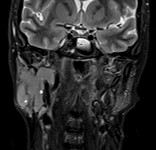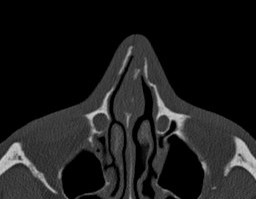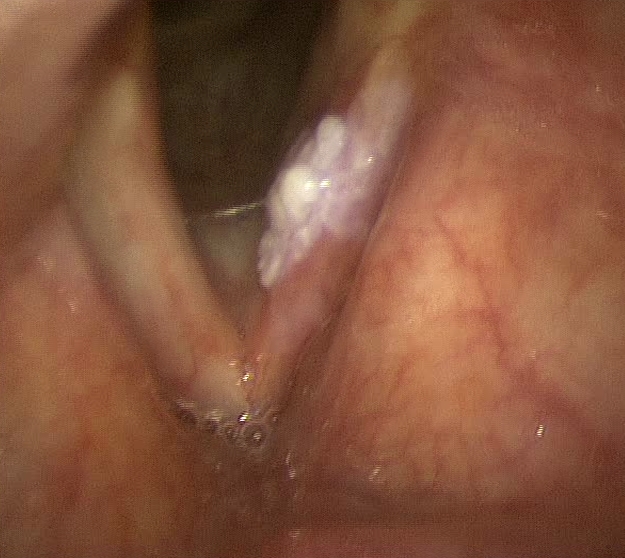LASER surgery of the larynx, the laringectomie subtotals and improved radiotherapy allow many patients to treat cancers of the larynx without excise it completely.
Unfortunately still today many cancers of the larynx and pharynx can be carried out only with the intervention of ’ total laryngectomy (eventually extended to the pharynx: faringolaringectomia)
L ’ l ’ total laryngectomy speech expected removal of the entire larynx, l ’ interview of the trachea to the skin (full permanent tracheostomy) and the rebuilding of a new food away completely independent of the airway. At discharge, patients undergoing total laryngectomy eat normally through the mouth but breathe exclusively through the Trach (no longer from the mouth and nose).
Patients often see this intervention as very mutilating but actually you can live with it almost normally: tracheotomy can be easily hidden by a scarf or clothing with the neck slightly’ tall and you can retrieve your voice! Continue reading
All posts by adminpilolli - 7. page
Diet and recommendations after tonsillectomy
L ’ intervention of tonsillectomy is a very simple procedure for the surgeon, routine, sure but it still sees a low complication rate.
The most feared complication is that you cannot reset hemorrhagic nohow. The bleeding risk remains regardless of any foresight or technology used in surgery.
The most critical days for bleeding are the first 2-3 days after ’ from the eleventh to the fourteenth ’ intervention and after the procedure. Continue reading
BMI calculator
The BMI (Body Mass Index) or body mass index is a useful parameter to assess the degree of a person's weight gain, based on weight and height
Oral papillomas – oropharynx

Oral papillomas are benign lesions and ’ from the ’ small oropharynx caused Human Papilloma Virus (HPV). Are generally caused by HPV types that are less likely to evolve to a malignant tumor. We recommend their removal as it can spread to healthy mucous to other parties. The transmission is solely from a human being all ’ other and predominantly through sex. In most cases, you can excise them by a simple operation under local anesthesia
Sjogren's syndrome

And’ a slowly progressive autoimmune disease, organ-specific systemic manifestations which is characterized by sweeping, the most important of which are represented by diminished salivary and lacrimal secretion which can cause keratoconjunctivitis Sicca respectively (xerophthalmia) and xerostomia (dry mouth). Often you can see the enlargement of the parotid glands. All Exocrine glands may be involved and therefore this syndrome is also referred to as a "esocrinopatia, autoimmune".
Sjogren's syndrome can exist in isolation (primary forms) or in combination with other immunopathological diseases (secondary forms making up about 60% of cases), predominantly in association with rheumatoid arthritis, systemic lupus erythematosus and systemic sclerosis.
Hits the 2% of the population and mostly female sex with a women:men of 9:1 Continue reading
Vocal cord paralysis
The 2 vocal chords are the structures that make it possible to produce sound by modulating the voice.
The vocal cords can stop moving or partially (paresis) or completely (paralysis). Their lack of mobility may be due either to a mass that blocks (carcinomas) or block of arytenoid articulation between the ’ ’ and the cricoid cartilage (rare, for arthritic phenomena, traumatic or necrosis of cartilage) or, most frequent situation, for a non-nervous control of the vocal cords (ricorrenziale palsy).
Nerve pathways may be broken or the central nervous system or peripheral level. Your vocal chords are controlled by the inferior laryngeal nerves (or recurrent nerves) that detach from the tenth cranial nerve (vagus nerve) in the cervical, descend down to chest level (right subclavian artery and left surround ’ surround l l ’ aortic arch) and then go back into the neck (Why are also called recurrent nerves) going to innervate the larynx. Rarely, to the right, the inferior laryngeal nerve can go to innervate the larynx directly without descending into the thorax (recurrent nerve not applicable).
The nasal bone fractures
 Are very frequent, can be isolated or associated with other cranial fractures.
Are very frequent, can be isolated or associated with other cranial fractures.
Are composed and decomposed, the first do not require treatment, can affect the nasal bones and/or the septum.
Can be classified into side and front trauma fractures.
In those side can be affected by trauma 3 plans as a function of increasing kinetic:
I floor: ipsilateral nasal bones with evident sinking;
II floor: nasal septum and nasal bones contralateral;
III floor: fracture of the frontal process of the maxilla and lacrimal bone with possible fragmentation and damage lacrimal apparatus.
L ’ epistaxis

Epistaxis, namely bleeding from the nose is not a disease but a symptom of local or systemic diseases.
Systemic causes (60-70%): arterial hypertension, antiplatelet drugs or anticoagulants, bleeding disorders, piastrinopatie, piastrinopenie, liver failure, kidney failure, scurvy.
Local causes (30-40%): microtrauma from scratching and foreign objects (especially in children), small varicose veins, nasal trauma, facial tissues, craniofacial, rhinitis, Granulomatous rhinitis, vasomotor phenomena (excessive sun exposure), irritating dust, benign tumors (bleeding polyps septal, juvenile fibroangioma), trophic ulcer of nasal septum (cocaine, chrome, cement), malignant tumors (typically cause brownish discharge, streaked with blood), post surgical, Telangiectasia (Rendu-Osler).
The precancerous and malignant tumors of the vocal cords
Even the mucous membranes of the larynx and in particular of the vocal cords can degenerate form of malignant tumors (predominantly squamous cell carcinomas).
This phenomenon occurs mostly in patients who smoke or who drink alcohol are chronically.
The degenerative process is a long process, characterized by several stages that are collected in the generic definition of Squamous intraepithelial lesions (Sils). Some types of SILs are self-limiting and reversible, Some are stable, other proceeding inexorably towards the SCC, Despite an adequate follow-up and treatment.

The most frequently used classification is the one offered by the World Health Organization (Who) in 2005, distinguishing laryngeal precancerous in:
1-Squamous cell hyperplasia: We observe an increased cell proliferation that can affect the level cell carcinoma of the skin, in this case we speak of Acanthosis, or prebasali or basal layers; the architecture is smooth and lacks atypia
2-Mild dysplasia: architectural alteration accompanied by atypia, limited to the lower third of the epithelium
3-Moderate dysplasia: interesting architectural alteration the middle third of the epithelium, with prominent nucleoli and nuclear abnormalities presenting cells, no abnormal mitosis. The lesions may be associated with Actinic
4-Severe dysplasia: interesting more than two-thirds of the epithelium, with prominent architectural anomalies, atypia, obvious nuclear abnormalities, loss of maturation, nuclear pleomorphism, bizarre nuclei. We observe an increased number of mitosis. Severe dysplasia has the same risk of developing invasive carcinoma of carcinoma in situ
5-Carcinoma in situ: that is a malignant transformation that does not invade the basement membrane
Dysphagia
For dysphagia means difficulty in swallowing solid foods and liquids
Main causes of dysphagia:
-Central neurogenic: stroke, brain injuries, dementia, Parkinson's disease, tumors of the brain stem, SLA, multiple sclerosis, Huntington's disease, poliomyelitis, syphilis.
-Peripheral neurogenic: peripheral neuropathy (Diabetes), myasthenia gravis.
-Muscles: polymyositis, Dermatomyositis, muscular dystrophy, Achalasia, diffuse esophageal spasm, LES hypertonia, Scleroderma
-Obstructive pulmonary disease: tumors, abscesses, Zenker diverticulum, Esophageal diverticula, extrinsic cervical masses, Mediastinal disorders, vascular disorders, cervical spondylosis, cicatricial esophageal rings, foreign bodies.









